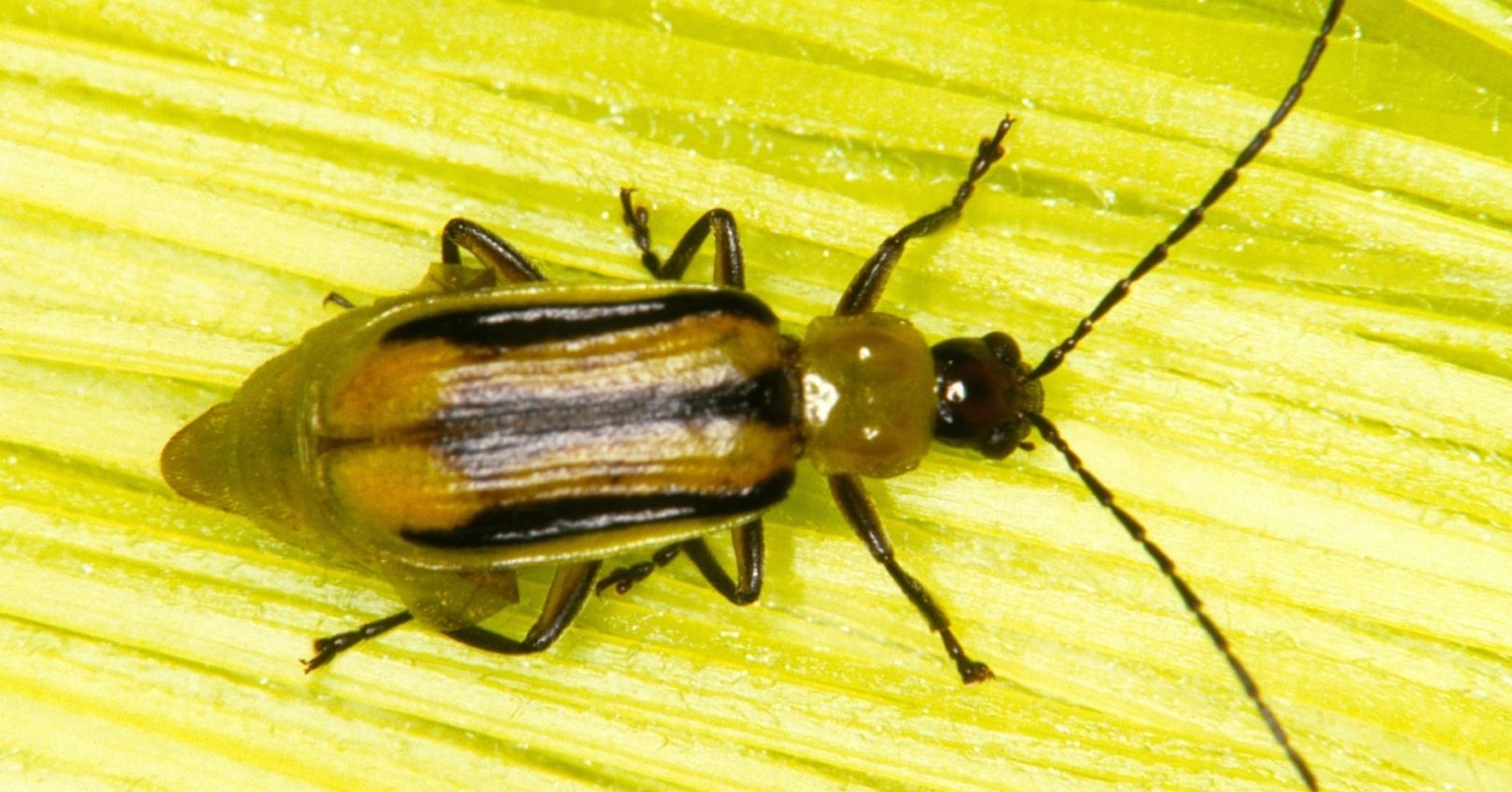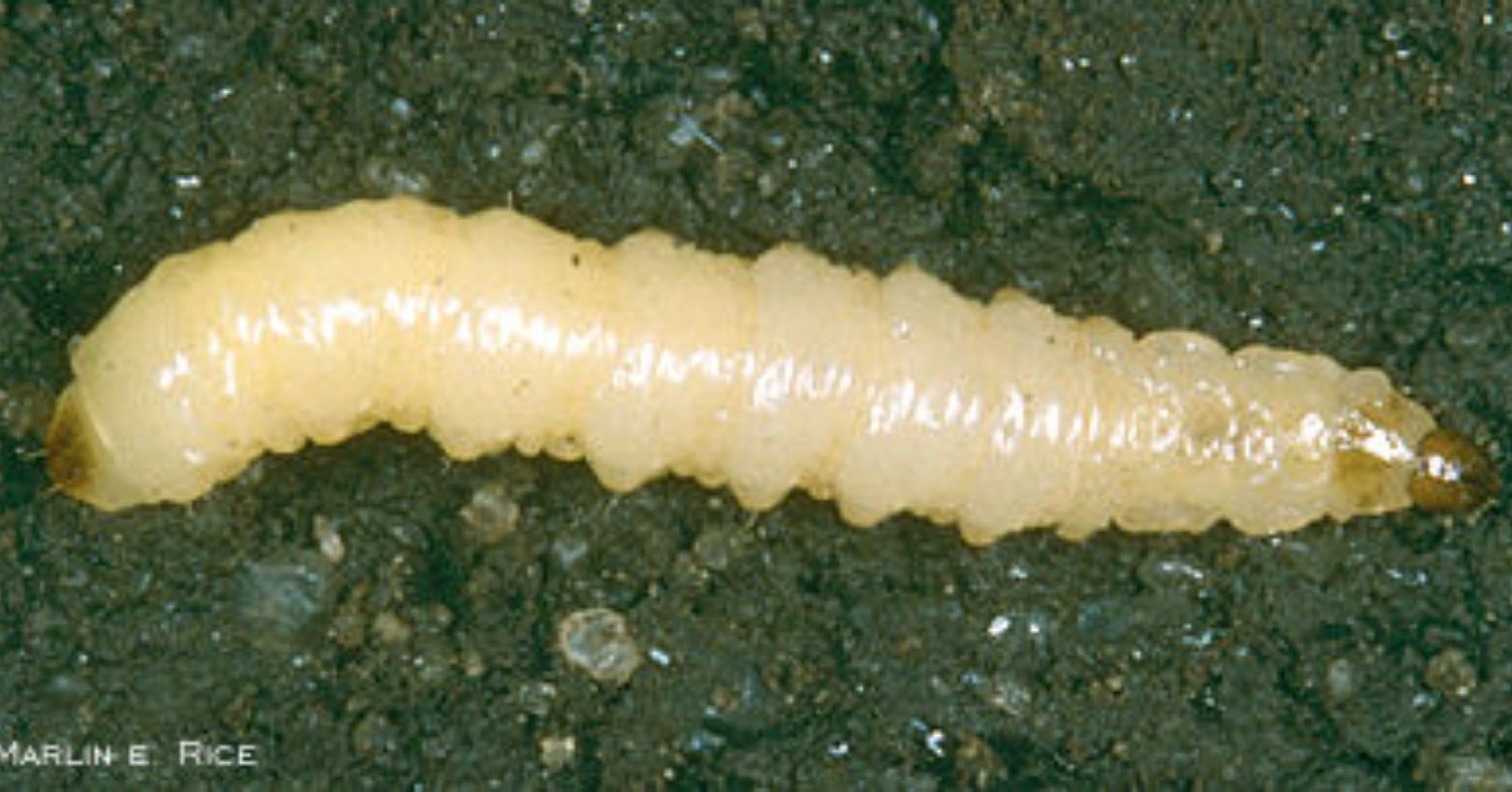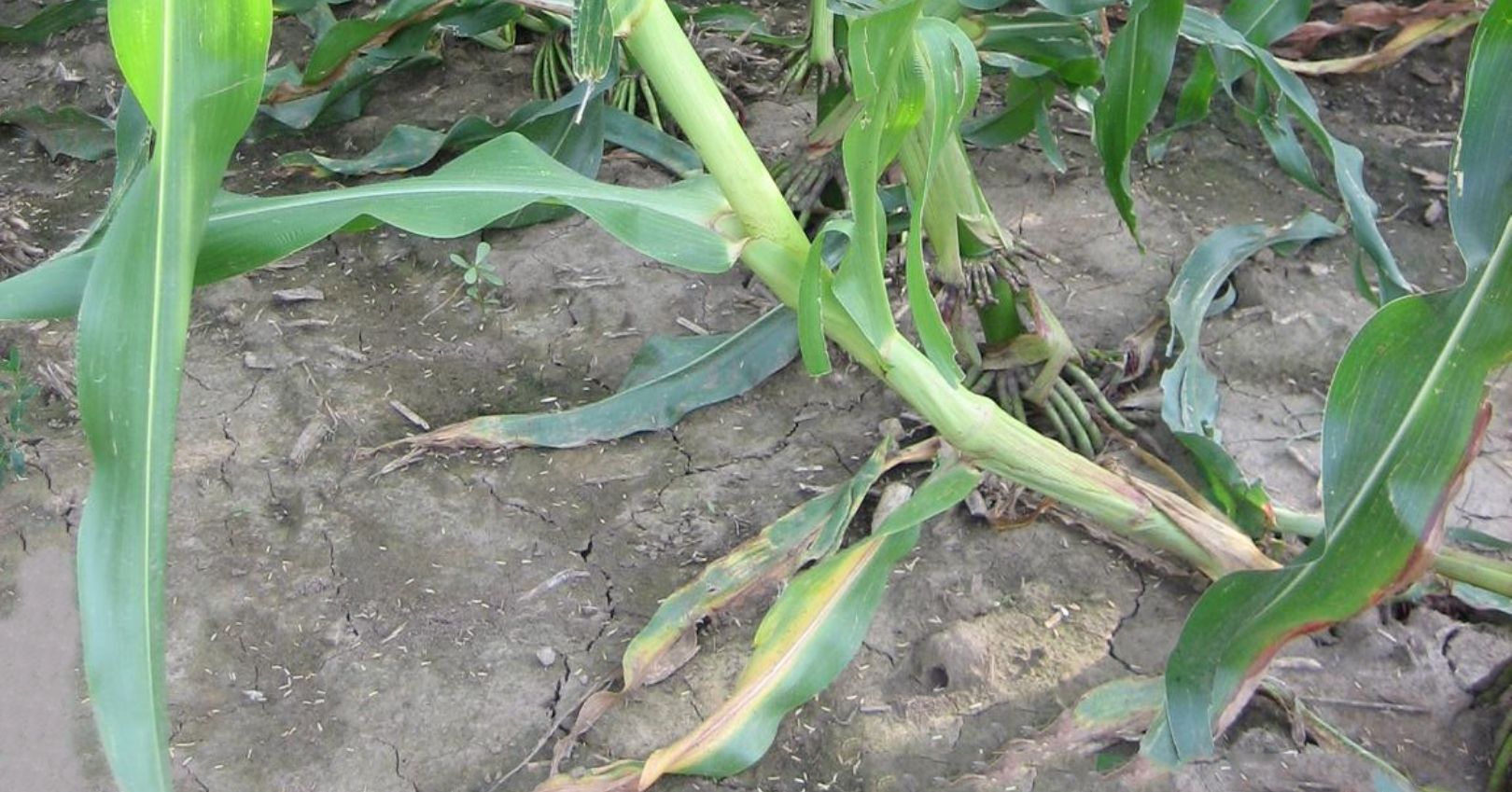Western Corn Rootworm



There are two species of corn rootworm in Utah: the western and northern corn rootworms. The western corn rootworm, however, is the one that will typically cause damage at an economic level for which control measures may be needed.
Description
Adult: A small beetle, about 0.25 inch (6 mm) long, with yellow-green body and three black stripes on the forewings. Black stripes on the abdomen may overlap making the wings appear solid black. Females are slightly larger with an extended ovipositor.
Egg: White, football-shaped, and less than 0.03 inch (0.8 mm) long.
Larva: Colorless when hatched but turn white as they feed and develop. Mature larvae are creamy color, 0.5 inch (13 mm) long, brown head capsule.
Pupa: Translucent white and are similar in appearance to the adult stage.
Life History
Western corn rootworms (WCR) overwinter as eggs and begin hatching in late spring. Newly hatched larvae seek out and begin feeding on small corn roots and root hairs. As larvae mature, they feed on and tunnel in primary roots. The majority of root-feeding injury occurs in the early to mid-summer. After feeding, WCR will then pupate in the soil for 5-10 days. Adult emergence occurs from late June to mid-July. They feed on corn leaves, green silks, and pollen. After mating, females begin laying eggs around the end of July. Females prefer to lay eggs in moist areas such as near the base of corn stalks or in the soil between the rows of irrigated corn. During their lifetime, adult females can lay between 500 to 1,000 eggs. Eggs laid in late summer require a cold period, known as diapause, before hatching the following spring and attacking the following year’s crop. The WCR typically has one generation per year.
Damage
Larvae are the most damaging stage because they feed on the roots of corn plants. Roots injured by WCR larvae will initially appear brown and have lesions. As the larvae continue to feed they may be found tunneling into larger roots and occasionally into the plant crown. As more roots are damaged by larval feeding, the corn plant becomes unable to absorb water and nutrients effectively, causing corn stalks to grow in a curved shaped also known as “goosenecking”. Yield losses may occur because pollination is often compromised and the misshapen plants are difficult to harvest. Damaged corn roots are also more susceptible to root and stalk diseases. Adults feed on corn leaves, silks, and pollen, which can result in poorly filled ears. Adult feeding, however, typically doesn’t result in enough damage to cause economic losses.
Management
Cultural
- Monitor with sticky traps. Knowing the adult population size will help to determine whether treatment is needed the following season. Using yellow sticky card traps can help determine initial and peak adult emergence during silking and pollen shed. Adults are attracted to the bright yellow color of the cards and get stuck on the adhesive substance on the surface. Use one sticky card for every 5 acres of corn. Consider treatment the following year in continuous-corn if adults exceed 35 per trap per week.
- Rotate corn crops. WCR has one generation per year. Rotating corn every three years with non-related crops will minimize larval survival and root damage. If larvae hatch in a field without corn they will starve to death because they will only feed on corn roots and are not highly mobile.
- Plant early. Planting corn early may disrupt the synchrony of adult emergence with corn silking, and will allow plants to develop stronger roots systems.
- Select varieties that produce vigorous roots systems and are well adapted to the area. These varieties will be more tolerant of moderate amounts of root feeding.
Chemical
The number of adults present during the previous growing season is the best guide for selecting the fields to be treated
- Soil Treatments
◦ Use granular insecticides at planting or cultivation. Insecticides can be applied in-furrow, banded over the row, or incorporated into the soil.
◦ Liquid insecticides can also be applied at planting or at cultivation by spraying at the base of the plant. - Seed Treatments
◦ Corn seeds treated with an insecticide can help reduce light to moderate corn rootworm populations, but may not be effective under heavy pressure.
Biological
There are few known natural predators of the western corn rootworm. Some species of predaceous ground beetles and mites feed on rootworm eggs, larvae, and pupae in the soil; however, these predators generally do not have a major impact on rootworm populations. Pathogenic nematodes that infect rootworm larvae are being investigated to find out if they can provide rootworm control.

